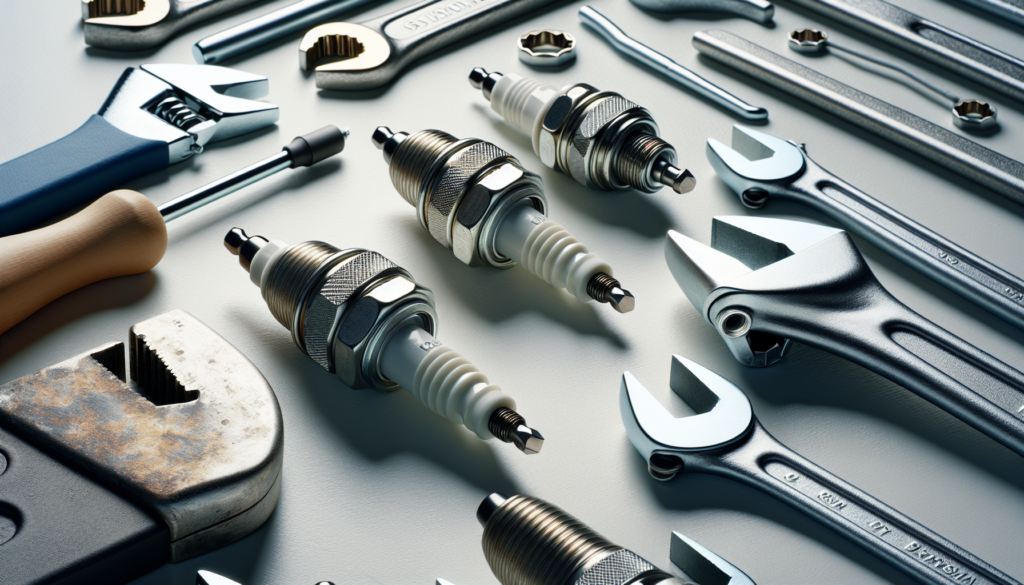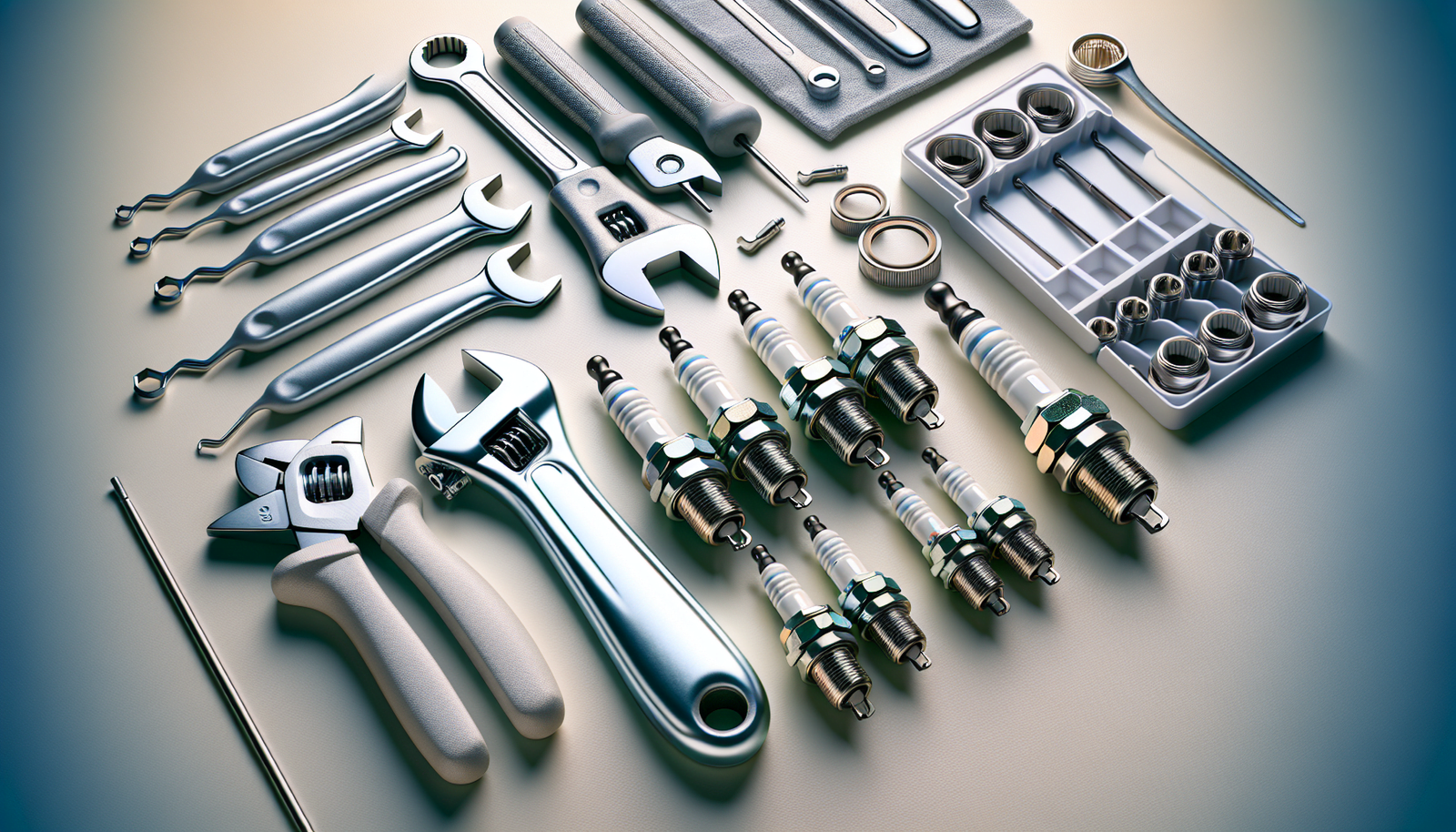Getting tired of the frequent visits to the mechanic? Has changing the spark plugs in your boat become a constant headache? Arm yourself with some basic tools and a bit of patience, because this article is here to take you through a detailed procedure on how to do it yourself. “Step-by-Step Guide to Changing Boat Spark Plugs” presents a straightforward, easy-to-follow guide so you can proudly take your boat maintenance into your own hands. By the end, you’ll know all the tricks to keep your boat performing at its peak, without unnecessary trips to the repair shop. Buckle up, and let’s get started!

Understand Why Spark Plugs Need Changing
For an optimally functioning boat engine, maintaining every integral component is crucial. One often overlooked aspect of the boat engine maintenance is the condition of the spark plugs, but understanding their importance may nudge you to give them the attention they deserve.
Significance of spark plugs in boat engines
Spark plugs are essentially the heart of the boat’s engine, setting off the combustion process that is vital for the engine’s operation. When you turn on the boat engine, it’s the spark plugs that ignite the air-fuel mixture inside the engine cylinders. This spark triggers a tiny explosion, providing the energy to power the engine. Without properly functioning spark plugs, your engine might struggle to perform, or not run at all.
Common reasons for spark plug failure
Spark plugs are designed to be tough and last for years, but they inevitably succumb to wear and tear over time. The two main culprits causing spark plug failure are usually fouling and heat range. Fouling happens when the spark plug tip gets clogged with oil or carbon, while the incorrect heat range can lead to overheating or pre-ignition.
Symptoms of a faulty spark plug
Recognizing the symptoms of a faulty spark plug can save you a lot of time and trouble. Common signs include power loss, poor fuel economy, engine misfires, or difficulty starting the engine. Also, if your engine is running roughly or the boat feels sluggish, that’s a likely signal your spark plugs are in poor condition and need replacing.
Identifying right Spark Plugs for Your Boat
To boost your boat’s performance, it’s vital to find the correct spark plugs that perfectly match your boat’s engine specifications.
Understanding types of spark plugs
Primarily, there are two types of spark plugs: resistor and non-resistor types. Resistor spark plugs have a resistor in the plug which reduces radio frequency interference caused by the sparking action. Non-resistor plugs don’t have this feature. The kind of spark plug suitable for your boat largely depends on your boat engine’s design and manufacturer’s recommendation.
How to know the correct spark plug model for your boat
To ascertain the correct spark plug model for your boat, refer to your boat’s operator manual. If you don’t have it, a quick search online using your boat’s make, model, and year generally provides accurate information. Another reliable source is your boat’s engine manufacturer or an established boat service center.
Where to buy boat spark plugs
There are several places to purchase spark plugs for your boat. You can check with a local marine supply store, or opt for online stores such as Amazon or eBay. Always ensure that you’re purchasing from a credible retailer to avoid counterfeit or substandard products.
Basic Tools Needed for Changing Spark Plugs
Having the basic tools and supplies for the task at hand can make changing your spark plugs a breeze.
Important tools for the task
Tools you’ll need include a spark plug wrench or socket, a ratchet, a spark plug gap gauge, and anti-seize compound. A wire brush is also beneficial for cleaning purposes, and keep a clean rag or towel on hand for any spills or messes.
Protective gear requirements
Safety should always be your primary concern while working on your boat. Non-conductive gloves protect you from shocks, while safety glasses shield your eyes from possible debris. A protective overall keeps your clothes free from oil or grease.
Preparing your workspace
A well-lit, well-ventilated workspace is essential. Ensure you’ve enough room to manoeuvre around the boat and tools within easy reach. A clean environment reduces the risk of foreign material falling into your engine, which could potentially cause damage.
Preparing the Boat for Spark Plug Replacement
Before starting the spark plug replacement process, a few preliminary steps are necessary.
Procedure to cool down the engine
Never work on a hot engine; it poses a serious burn risk and can lead to car parts expanding and making removal difficult. Allow your boat engine to cool down sufficiently before proceeding with the spark plug replacement.
Disconnecting the battery
As a safety measure, disconnect the battery to prevent accidental ignitions. Unplug the negative terminal first to avoid creating a potential electric circuit.
Locating the spark plugs on your boat engine
Typically, you can find the spark plugs on the top or side of the engine. Each engine cylinder has one spark plug connected to it via a wire. It’s often a good idea to take a photo or make a drawing of the spark plug arrangement, so you can reconnect the wires correctly later on.

Removing the Old Spark Plugs
Now that everything is in place, you can begin the process of removing the old spark plugs.
Unplugging the spark plug wires
Grasp the end of the spark plug wire firmly and gently pull it off the spark plug. Avoid tugging at the wire itself as this might damage it. Repeat this for each spark plug wire.
Proper way to remove old spark plugs
Fit the spark plug wrench or socket over the spark plug’s ceramic insulator and turn it counterclockwise to unscrew it. Here, patience is key. Rushing or applying excessive force can lead to broken spark plugs and further issues.
Cleaning the spark plug hole before installing a new one
Use a rag or cleaning spray to clean around the spark plug hole. A small brush can be used too if there’s significant accumulation of dirt or debris. This ensures a clean fit for the new spark plug and reduces the risk of contaminants entering the engine.
Inspection of Old Spark Plugs
Analyzing the condition of your old spark plugs can provide valuable insight into your engine’s health.
Identifying signs of damages on old spark plugs
Check the old spark plugs for signs of damage. Cracks or chips on the ceramic insulation, burnt electrodes or deposits build-up can indicate issues like leakage or overheating. If the spark plug shows severe wear, it could suggest that your engine is burning oil.
What does the colour of the used spark plug signify
Observing the color of the used spark plug can also discern how well your engine is functioning. A light tan or gray color signifies optimal conditions, whereas a black, oily plug indicates oil leakage.
Saving or discarding old spark plugs
Generally, you should discard old spark plugs. While some might advocate cleaning and re-using them, it’s generally not worth the effort. New spark plugs aren’t overly expensive and guarantee optimal performance.
Preparation of New Spark Plugs
Before installing new spark plugs, a tad bit of preparation is needed to ensure a proper fit and long operation life.
Applying anti-seize compound
Applying a small amount of anti-seize compound on the plug’s threads can prevent them from seizing or corroding, making future changes easier.
Setting the correct spark plug gap
Spark plugs typically come pre-gapped from the factory, but it’s always best practice to check and adjust the gap as necessary. Use a gap tool and adjust the gap to the value indicated in your boat’s operator manual.
Preventing cross-threading of spark plugs
Cross-threading occurs when a spark plug is forcibly screwed in an incorrect angle or alignment. Avoid this by starting the installation process by hand, which allows you to feel if the plug is seated correctly, and only use the socket and ratchet once you’re sure it’s going in straight.
Installing the New Spark Plugs
With your new spark plugs prepared, it’s time to proceed with the installation.
Procedure to install the new spark plug
To install the new spark plug, screw it in by hand to avoid cross-threading. Once the spark plug is hand-tight, use the socket and ratchet to tighten it further, generally an additional half-turn is sufficient.
How to avoid over tightening
While the spark plug needs to make a solid seal with the engine, over-tightening can cause damage. It can lead to stripped threads or a crushed gasket, which can potentially lead to engine damage down the line. An additional half-turn after the spark plug is hand-tight usually suffices for this.
Reconnecting the spark plug wires
Make sure to reconnect each spark plug wire to the corresponding spark plug. Revisiting the photo or drawing you made of the arrangement before can ensure you reconnect the wires correctly.
Testing the New Spark Plugs
Before congratulating yourself on a job well-done and heading out on the water, it’s critical to test the new spark plugs.
Steps for a successful start
To start up, turn on the ignition and let the boat idle for a few minutes. Watch for smooth operation and any warning lights on the dashboard.
Sounding out abnormalities
Similarly, listen for abnormal sounds. Should your boat not operate smoothly or you hear unusual noises, it might indicate an issue like a loose spark plug or wrongly connected spark plug wire.
Measuring engine performance with new plugs
After the initial start, take your boat for a short spin. Here, you would observe attributes like engine responsiveness, fuel efficiency and power during acceleration.
Maintaining Your Spark Plugs
Finally, it’s important to remember that regular maintenance can significantly extend the life of your spark plugs.
Cleaning and inspection routine for spark plugs
Cleaning and inspecting your spark plugs should be a part of your regular boat maintenance routine. Checking them for signs of damage or wear and cleaning them using a wire brush and cleaning agent can keep them at peak performance.
Signs your spark plugs need replacement
While your spark plugs should last several seasons, be on the lookout for symptoms of a faulty spark plug mentioned earlier, indicating it might be time for another replacement.
Tips to extend the life of your spark plugs
To extend the life of your spark plugs, always run your engine with the correct fuel-to-air ratio, avoid unnecessary idling and don’t skip on regular maintenance and inspections. These simple steps can go a long way in ensuring the longevity of your spark plugs.


[…] cleaning spark plugs, remove them and clean the tips with a wire brush. For wiring, use a cleaning spray designed for […]
[…] engine spark plugs is an essential task that you simply cannot overlook. In the article “Expert Guide To Boat Engine Spark Plug Maintenance“, you’ll be taken through insightful, yet manageable steps to ensure that your boat […]